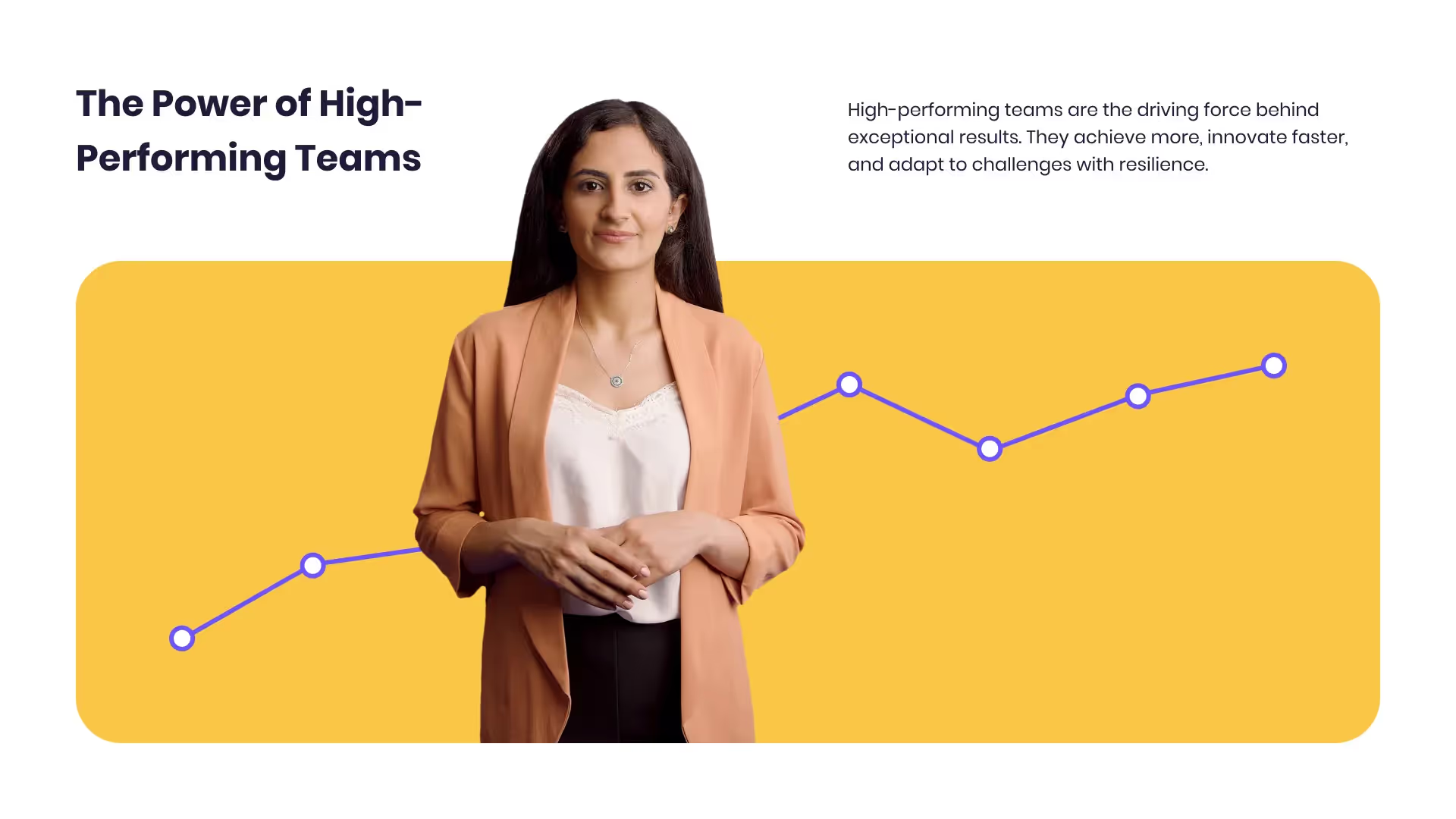.avif)
Want a personalised avatar?
Instant Avatars can be recorded using your phone or camera, and created in under a minute. These avatars are quick and easy to create, and they keep your original background and movements.

How Marketing-Led Learning Drives Real Business Impact


Most learning teams are stuck in a loop of creating training and then simply measuring attendance or course completions over and over.
However, those numbers being generated don’t show if anything actually changed. They just show that something happened.
That’s a huge problem.
Because if you can’t prove that learning helped someone do their job better, or supported the businesses wider goals, it’s hard to argue for more time, budget, or support.
It’s time for L&D to start showing real impact, and steal some ideas from marketing along the way.
From activity to impact: How to define success in L&D
It’s not enough to count clicks or downloads. We covered in our blog on vanity metrics that focusing too much on surface level metrics can hurt not just your initiatives but also L&D’s internal reputation.
Instead, we should ask: Did people learn something? Did they use it? Did it help?
That’s the difference between output and impact.
Start by defining what success looks like.
Before the project starts, agree with stakeholders on how you’ll measure it.
Track things like improved skills, better decisions, faster results, things that really impact the business.
It’s simple: if L&D is supposed to impact core metrics, then the business should see and feel the difference.
The power of marketing principles in learning
Marketing-led learning is about treating learning like a product.
Marketers start with audience research.
They find out what people need, what matters to them, and what gets their attention.
Then they plan how to reach them - what to say, where to say it, and how often.
L&D should do the same.
It’s not about making posters or videos.
It’s about understanding your people and making sure learning reaches them in a way that makes sense.
Strategic alignment: L&D as a business partner
L&D often gets asked to “make a course”. But that’s not always the real need.
Maybe the real issue is that people don’t have time. Or the process is broken. Or managers aren’t clear on expectations.
If we just respond to requests, we risk wasting effort on the wrong thing, and damaging our internal brand.
Start by asking better questions.
What’s really going wrong? How will we know if we’ve fixed it?
If L&D is here to support performance, then we need to be part of solving real problems - not just delivering content to patch over a gap.
Design for humans, not systems
A lot of learning still gets built around the LMS.
The LMS isn’t the problem - but it’s not the point either.
People don’t learn just because you upload a course.
They learn when something helps them in their moment of need.
So make it easy. Keep it short. Put it where people already are - like in their workflow, chat tools, or daily meetings.
And don’t forget the experience. It’s not just what you teach - it’s how it feels to engage with it.
Building awareness & engagement: Campaigns, not courses
One email doesn’t cut it.
Good learning campaigns are planned over time. They have a clear message. They use different channels. And they don’t stop after launch.
It’s about repetition, timing, and relevance.
Use models like AIDAL: Awareness, Interest, Desire, Action, Loyalty. Think about what your people need at each stage. Then plan your messages around that.
It’s not hard. But it does take planning.
Branding and trust: Why perception shapes engagement
People don’t engage with things they don’t trust or understand.
A clear, consistent learning brand helps. It tells people what to expect and why it matters.
Use plain language. Avoid jargon. Speak directly to your people. Answer their real question:
What’s in it for me?
Keep showing up. Stay consistent. Over time, people will start to notice - and care.
Conclusion: The future of learning is marketing-led
Marketing-led learning isn’t a campaign tactic. It’s a mindset.
It means starting with real problems, designing for real people, and measuring real impact.
It’s how L&D can go from support function to strategic partner.
And it’s how we make learning actually matter to the business.

Networking and Relationship Building
Use this template to produce videos on best practices for relationship building at work.

Developing high-performing teams
Customize this template with your leadership development training content.

Course Overview template
Create clear and engaging course introductions that help learners understand the purpose, structure, and expected outcomes of your training.
Frequently asked questions





Didn’t find the answer you were looking for?
















%20(1).avif)
.webp)

